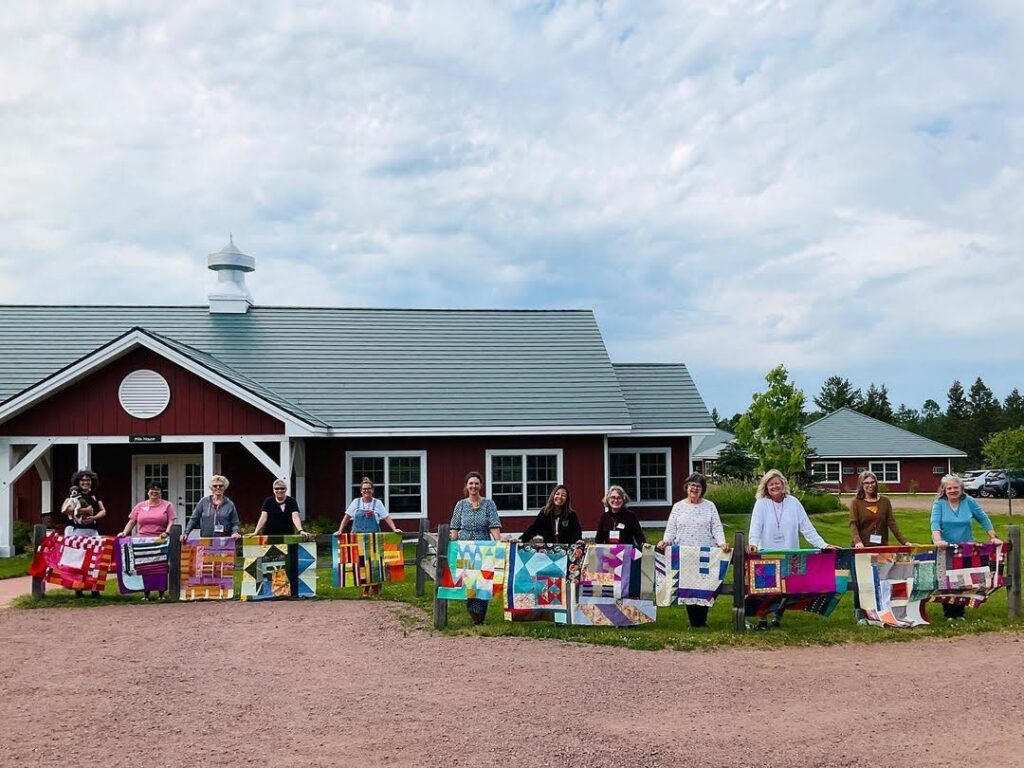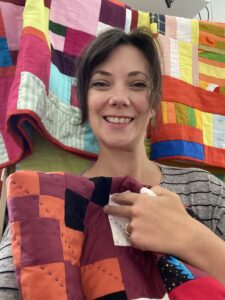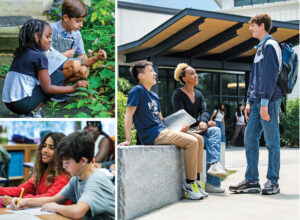During a sunny week in late June, a group of artists came together on Madeline Island in Wisconsin to learn about the craft of improv quilting. Among them was Lower School Art Teacher Amanda Milz. Amanda had become enamored with the reliable steadiness of the quilt — the way the fabric can be drawn from unsuspecting places, the rhythm of sewing each piece together, the finality of attaching the backing. Every stitch and every fold brings the quilt closer to its final form — a collection of cloth and thread that is unlike anything the quilter has ever seen or made before.
“In improv quilting, it’s not about envisioning a final product from the beginning,” says Amanda. “Instead, you set up parameters for the project, maybe a color that you want to use or a shape you want to create. Then, those elements inform your process as you approach each section piece by piece. In a way, you learn how to make each quilt as it comes together.”

For Amanda, teaching is a similar process. Instead of following strict lesson plans, Amanda looks to give her students a space for cultivating skills and encouraging problem solving. In one instance, Amanda might put together mini-lessons on how to use different materials — wood, clay, paper — and a few ideas about how to arrange them. But after that, she finds that the students will point her toward the next direction.
“You never really know what a student is going to respond to,” she says. She discussed how one group of students in 3rd grade really loved working with 3D paper – modeling it, touching it, connecting it.
“One student traced parts of his body on paper and then assembled it into a full 3D model of his body. The other students responded so strongly to it that I decided ‘Okay, time to switch gears.’” Later that week, they started a wearable paper unit — a project that would have been inconceivable just a week before.
But lessons themselves remain an important part of the classroom. In the same way that her time at Madeline Island helped her put together a foundation for her quilting, Amanda sees immense value in bringing students along together on bigger planned projects.
“Lessons are so critical for building skills,” says Amanda, “but I like to think that the skills are kind of like these quilting parameters. They’re not there to block your creativity: They’re there to be your foundation so that they don’t feel stuck but still end up with something that makes them say: I did this!”
Students and their parents rarely get a glimpse of teachers beyond their classrooms, but often teachers draw on their personal interests. Art teachers in particular hone their own skills and crafts in their free time, and their creative activities inevitably inform their teaching.
“I’m a painter by trade, but quilting kind of snuck up on me,” reflects Amanda. “At the start of the pandemic, I took my sewing machine out to make masks, but I had always wanted to make a quilt. And there I was, stuck at home. So I made my first quilt for my son, and I really loved the expectedness of it; I knew that if I sat down, and cut these squares and sewed them together I would end up with this beautiful rectangle. It was super concrete and real and reliable in a time of total chaos.”

Since then, Amanda has incorporated the principles of improvisation into her quilting. And while she is getting better at it, striking the right balance between freedom and guidelines can be tricky. If the parameters are too constricting, then you can freeze up and disrupt your creative process. But if they’re too wideopen, then the possibilities can overwhelm you.
“And that’s how it is for students also,” says Amanda. “Finding that sweet spot that helps you be creative and productive.”
“A quilt is kind of like a puzzle. You’re taking pieces of things, tearing them apart and then putting it back together. If that’s not relatable, I don’t know what is.”

